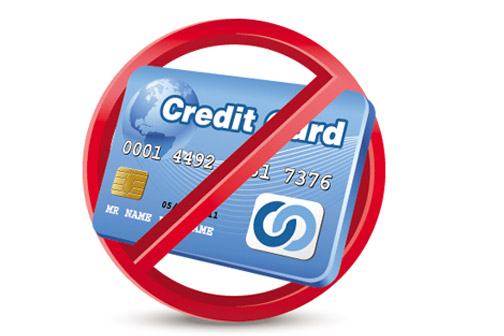

Dhruv checks into a hotel and is asked to provide his credit card details at the front desk. Once at his room, he gets a call from a fraudster on the room’s land line. The person on call says that he is from the hotel’s front desk, and informs Dhruv that there are some issues with his card. Dhruv is then asked to provide details again over the land line. Dhruv, assuming it’s a genuine call from the front office, gives his card details, including the CVV number and address.
In such a situation, Dhruv should have hung up the call and walked to the front desk to clarify the issue rather than provide his card details over a phone call.
Every credit card holder should take steps so that their card information does not fall into the wrong hands. In today’s scenario, a clear understanding of the ways in which credit card fraud can be perpetrated against you, assumes the utmost importance.
The various types of credit card frauds are:
- Lost or stolen cards: The most common reason for unauthorized card usage is a lost or stolen card. This should be immediately reported to the bank and most card issuers offer zero lost card liability up to a pre-defined limit for any disputed charges.
- Counterfeit cards: A counterfeit card often known as a ‘cloned card’ features a magnetic strip from another credit card. This process of copying is known as “skimming”. However, the past few years have seen a significant decline in this type of fraud due to the introduction of safety features, such as the EMV chip.
- Never received: This happens when new or replacement credit card is being mailed to a customer and gets intercepted by a fraudster.
- Account takeover: Account takeover happens when the cardholder unknowingly gives his credit card information to a swindler. Now, the cardholder’s bank can be easily contacted by the swindler and reported of a card loss as well as a change of address. In this way, the criminal is easily able to obtain a new card from the card issuer.
- Card-not-present (CNP) fraud: This happens when a fraudster knows your card number and the expiry date of your card. He may commit the crime by way of mail or phone, which does not require your card to be physically present, unless the merchant requests for the card verification code.
- Fraudulent application (Identity Theft): This happens when a swindler misuses another person’s name and personal details to apply for a credit card. This is among the most common form of identity thefts perpetrated by swindlers.
- Multiple Imprints: Old-fashioned credit card imprint machines are popularly known as knuckle busters. When a single transaction is wrongly recorded more than once in these knuckle busters, it is called multiple imprints. However, many a times, fraudsters perform the action willfully.
- Doctored Cards– The metallic stripe on any card can be wiped off using a strong magnet and the card details can be altered to match another’s. When the card does not work in front of the merchant, he may be conned into getting the card details punched in manually. This has also declined as most old credit card machines have been replaced and new cards come equipped with both an EMV chip as well as a magnetic strip.
Of all the preventive measures to secure financial transactions globally, keeping customers educated about potential frauds is perhaps the most crucial.
Here are some precautions to avoid getting trapped:
- Never share your credit card details with anyone, especially the Card Verification Value (CVV) and/or the one time password sent to your email/registered cell number.
- Sign on the back of your credit card at the time of receiving it.
- Monitor your account regularly and inform your card issuer in case of any discrepancy.
- Do not jot down the PIN of your EMV-credit card anywhere.
- Always use a trusted website for any online transaction and check for SSL encryption.
- Don’t click on any unknown link in your mail box- it could be a phishing mail.
- Ensure that your new card reaches you in a sealed condition.
In case of a grievance, you can resort to an ombudsman, which has been appointed by the Reserve Bank of India for redress, in case of failure at the bank’s end to respond satisfactorily to your complaint. A bank ought to respond within 30 days from the day you lodged a complaint against the fraud, in case that does not happen, you can get help from the ombudsman.
As we move closer towards a cashless economy, it is in our interest to continually update ourselves regarding how to keep our financial details such as credit cards safe. However, in case things do go wrong, it is always best to know how the matter can be resolved with the least loss of time and effort.
3 Comments
It works really well for me
It works really well for me
Thanks, it is very informative